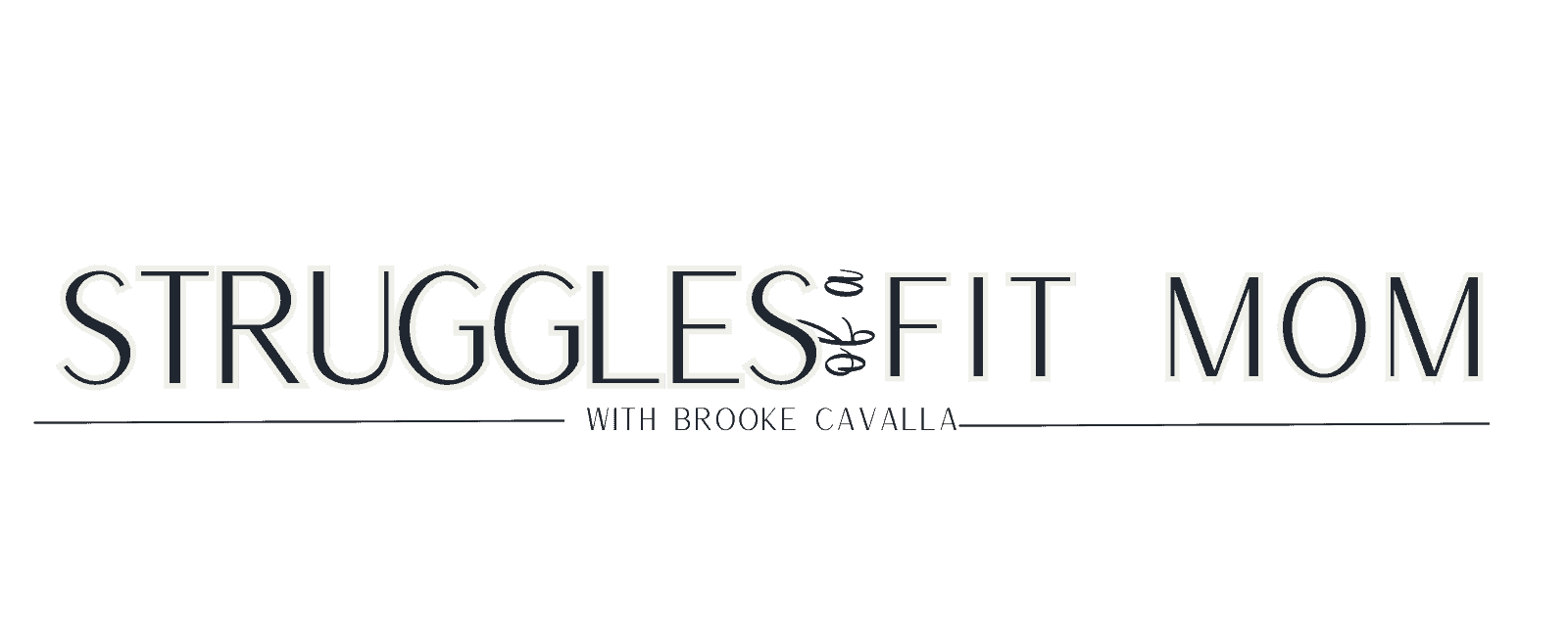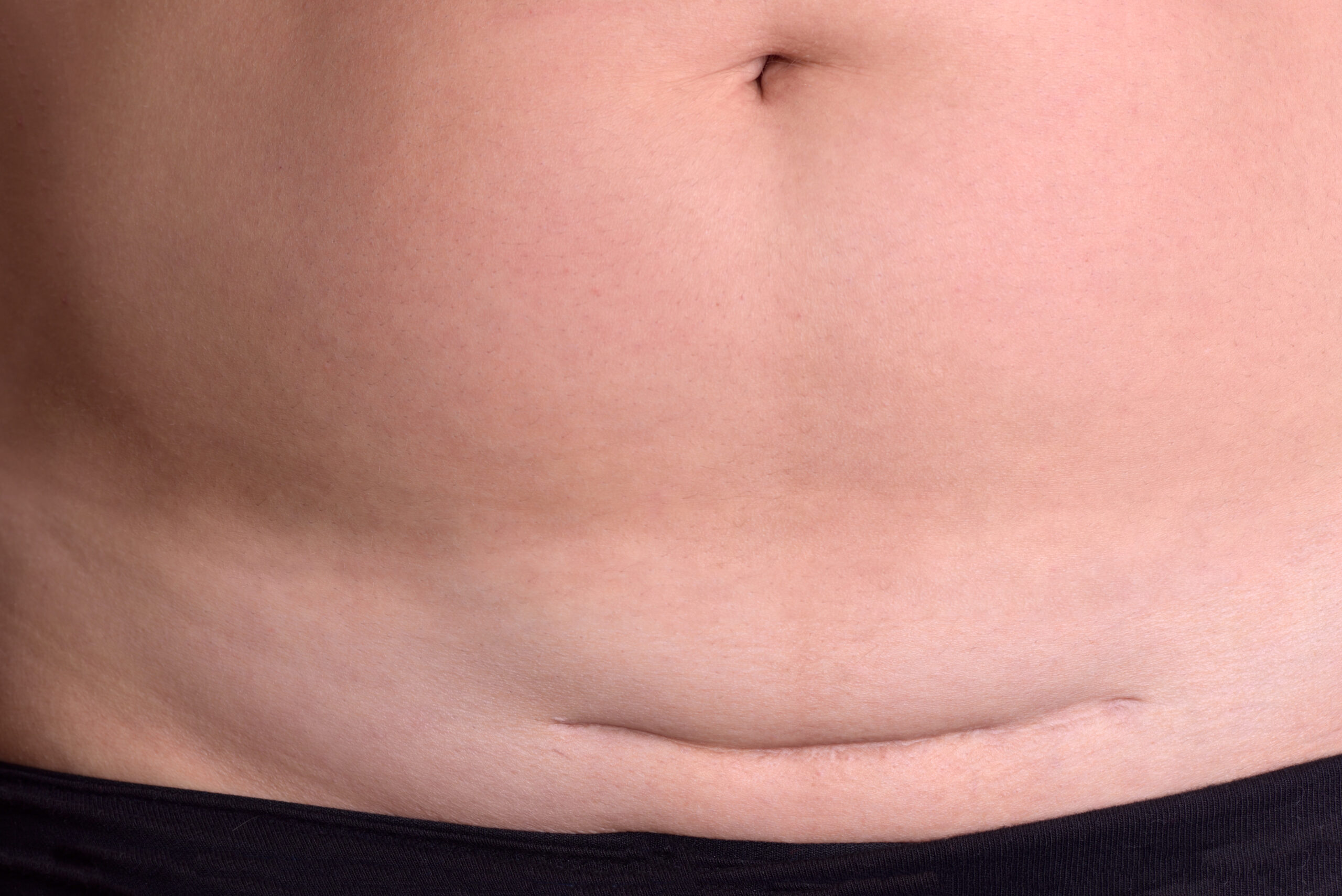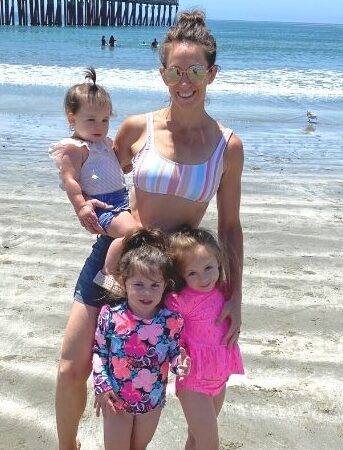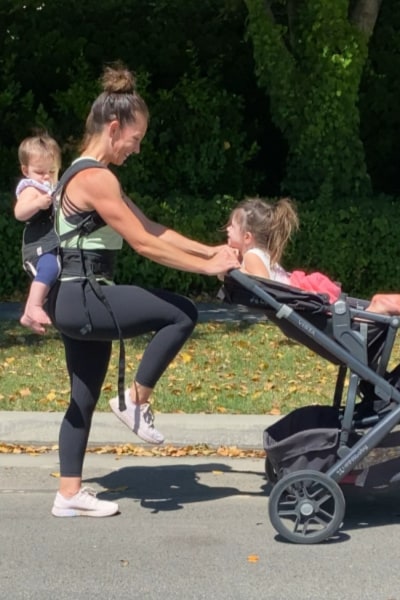How To Reduce a C-Section Belly Overhang Naturally [No More Hiding]
In 2021, roughly 32% of live births were via c-section delivery.
And most moms were handed a leaflet on how to care for their wound but nothing about the lasting effects this major surgery can have on your body, confidence and mental health.
(Lack of postpartum care is where the healthcare system fails moms!)
So if you struggling with a stubborn belly overhang after a c-section delivery, you are definitely not alone.
Whether your cesarean section birth was planned or not, it can have lasting effects on your body, confidence and mental health.
Today, I want to share some of the best ways to reduce or get rid of a hanging belly after a c-section, including safe abdominal exercises, healthy eating habits, and even surgical options such a tummy tuck.
I’ll also touch on other factors that can impact your postpartum recovery, such as hormonal changes, scar tissue, and postpartum depression.
Let’s dive in!
“Ugh! Why Does My Belly Skin Hang Over My C-Section Incision?“
A c-section “pooch” is the result of multiple factors including weight gain during pregnancy, extra skin and weakened abdominal muscles.
Having a caesarean section birth is considered major surgery in which several layers of fat, fascia and excess tissue are gut to safely remove the baby.
However, the scar left behind can cause restriction in the skin and uneven tension.
This tension can cause extra fat cells and stretched skin from pregnancy to hang over the c-section scar. Think of the scar as a tight band that restricts the skin surface area.
Additionally, the extra weight from pregnancy, hormonal changes and increased stretching of the surface area of the skin can also contribute to a noticeable hanging belly and even stretch marks around the incision.
Now you know the cause, let’s discuss ways to address it without resorting to cosmetic surgery such as a tummy tuck procedure.
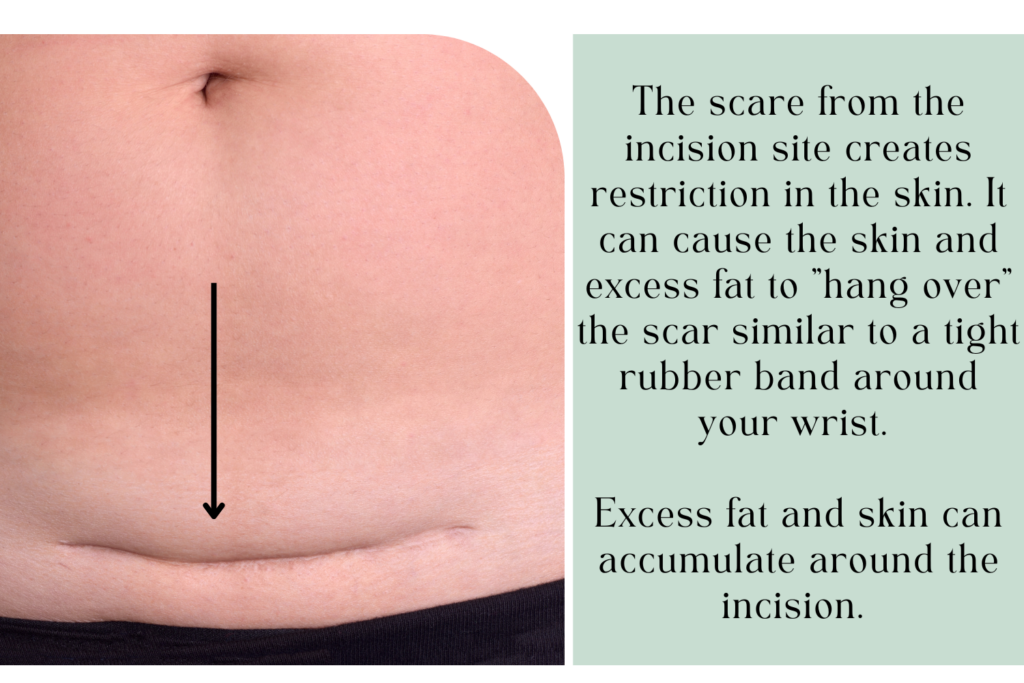
What is the Difference Between a Hanging Belly and Mommy Pooch?
The first step to reducing a c-section pooch is to determine if you have something called “Diastasis Recti”.
This is because the approach to healing these two conditions is different and will impact your overall postpartum fitness journey.
Diastasis Reciti/ Pooch
C-Section Belly Overhang
The good news is that while the causes and appearance of these conditions can differ, they can both be improved with specific exercises and lifestyle changes.
Related: Say Goodbye To Apron Belly: The Non-Surgery Solution

Can I Get Rid Of Hanging Belly Skin After a C-Section Without Surgery?
The truth is, you may never be able to completely get rid of a c-section overhang because it is not possible to spot reduce specific areas on your body regardless of diet and exercise.
If you have lost all your baby weight and have healed your core but still have skin that hangs over the incision, the only way to completely get rid of this excess skin is with surgery.
The good news is that you can still reduce the appearance of a hanging belly without surgery.
Non-Surgical Methods To Reduce a C-Section Shelf:
1. Scar Mobilization
Scar tissue from a c-section can take up to two years to heal properly, and scar mobilization can be a helpful technique to aid in the healing process.
Massaging your scar and surrounding tissue can increase blood circulation, which can loosen the scar tissue and surrounding fascia.
This can help to smooth out the scar and reduce the appearance of excess skin leading to a reduction in belly overhang.
While scar mobilization is not discussed enough, it can be a useful tool in promoting healing and reducing the appearance of a belly overhang and unwanted scars.
2. Weight Loss
It goes without saying that reducing your overall body fat through the combination of exercise and a calorie deficit can help reduce your c-section overhang but only to an extent.
This is because the overhang is not only caused by excess body fat but it is also the result of excess skin and weakened core muscles.
If you have lost all your baby weight and still have a flap over your scar, you may need to consider cosmetic approaches. But this is dependent on your own personal situation!
3. Proper Postpartum Exercise Routine
Healing your body through corrective and restorative postpartum exercises will help to strengthen the core muscles, heal Diastasis Recti, and reduce the appearance of a c-section overhang.
Diving headfirst into core exercises after pregnancy such as planks and crunches can actually make your c-section flap worse.
If you have unhealed Diastasis Recti, these exercises place too much pressure on your abdominal wall and the thin connective tissue that holds the rectus abdominis muscles together.
Over time, this will continue to make your stomach look pudgy or pregnant even though you are not.
And if your core muscles are not healed properly, it will affect almost every workout you do by causing incontinence, back pain and pelvic pain.
4. Change Up Your Diet
What you put into your body plays a significant role in your body’s healing process.
Replacing junk food with protein, whole grains and healthy fats will help your body heal much faster from the inside out.
Drink a lot of water instead of drinks with extra calories.
Eating healthy after birth or as a busy mom is no easy feat! But it will make a big difference in helping you to reach your goals.
Related: Stop Calorie Counting and Try This Instead-Calorie Cycling For Weight Loss
Things That Won’t Work
Avoid falling victim to things like:
These things will not help you get a flat stomach and can actually cause more harm than good.
This is where patience comes in and learning to find what works best for you and your situation.
Realistically, How Long Until I See Improvement?
I know your postpartum journey can feel frustrating and defeating but I encourage you to be patient and kind with yourself.
Celebrate each small victory along the way be proud of your entire body for the miracle it has created!
Your recovery time will be affected by things such as how long ago you had your c-section, how many c section births you have had and if the overhang is from excess skin or body fat.
Keep in mind that everyone’s body is unique and responds to postpartum exercise and healthy habits at their own pace.
That being said, you should notice improvement anywhere from several weeks to a couple months.
Remember, consistency is the most important factor in seeing results.
The combination of specific core exercises to target weak abdominal muscles and incorporating healthy foods into your routine can definitely help speed up the process.
Related: 88 Most Powerful Affirmations To Help You Start Loving Your Beautiful Body
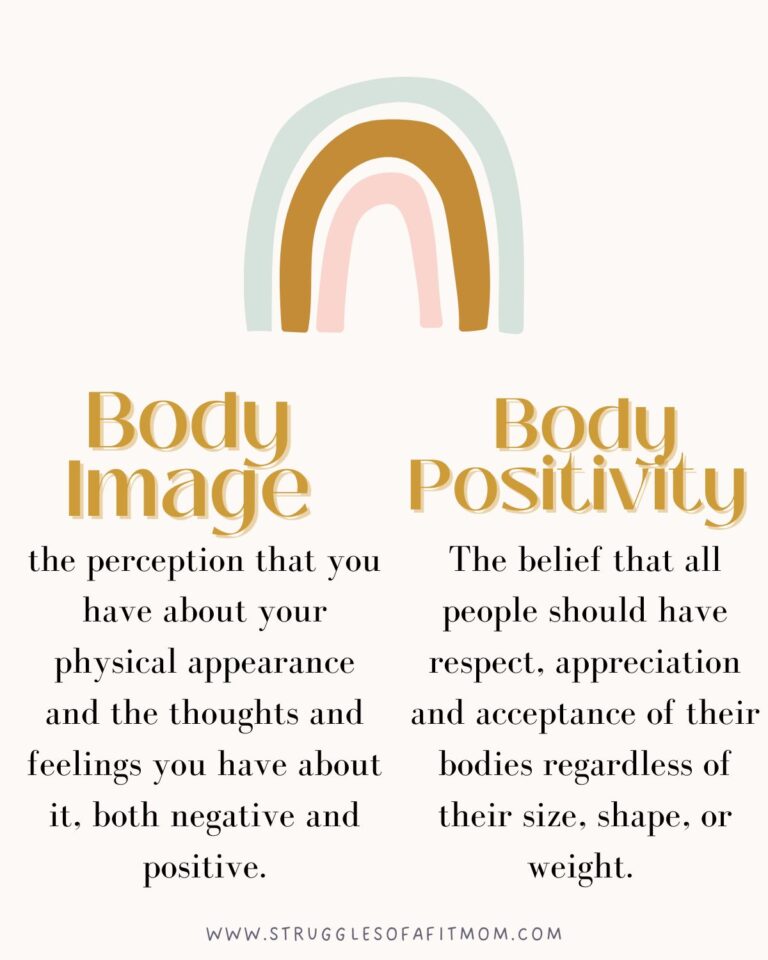
What Exercises Target a Post C-Section Hanging Belly?
Unfortunately, it is impossible to spot reduce specific areas on your body.
However, every postpartum mom should take the time to heal their core correctly after pregnancy.
Not only will it help tighten your tummy, but it can also help improve the appearance of your c-section scar and extra overhang.
Related: Peace out Mummy Tummy-Heal Your Core The Right Way After Pregnancy
How Can I Prevent a Mummy Tummy Overhang During Pregnancy?
I wish that I could guarantee ways to help you completely prevent a c-section shelf but unfortunately, I would be lying if I said I could.
However, the best ways to reduce the severity of a mummy tummy overhang is to maintain healthy eating habits, be mindful of your pregnancy weight gain, and exercise regularly during pregnancy.
Keeping your core strong during pregnancy can also help reduce the likelihood of developing excess skin and fat that accumulates around your c-section scar.
Keep in mind that many c-section births are not planned, especially for new moms, so you many not be able to completely prevent a c-section pooch.
Related: Pregnancy Fat Loss-Is it Safe? The Answer Might Shock You
Is Surgery The Only Option For Getting Rid of a Mommy Tummy?
This depends on what is causing the c-section overhang.
If the flap is the result of excess skin, then surgery may be the only option.
However, if you still have excess fat to lose or your abdominal separation has not completely healed, then you may be able to avoid surgery by focusing on improving your diet and strengthening your core.
If the hanging belly skin is severe and causing significant discomfort or affecting your quality of life, surgery may be the best option, and you should consult with a qualified plastic surgeon to discuss your options.
Will Wearing a Belly Band Help?
Many companies mislead consumers by claiming their compression garments or belly bands can eliminate a belly pooch or stomach overhang but this is completely impossible!
The only way to change your body composition is through a healthy diet and exercise routine.
While postpartum belly wraps can alleviate some incision pain, they cannot get rid of excess skin or fat.
The waist trainers can actually be more harmful by increasing pressure on the weakened pelvic floor, which increases the risk of pelvic organ prolapse and dysfunction.
In short, waist trainers can lead to protrusion of the uterus, bladder or rectum, and urinary or fecal incontinence- definitely not worth it!
Related: The Truth on Postpartum Waist Trainers: Is it Worth The Risk?
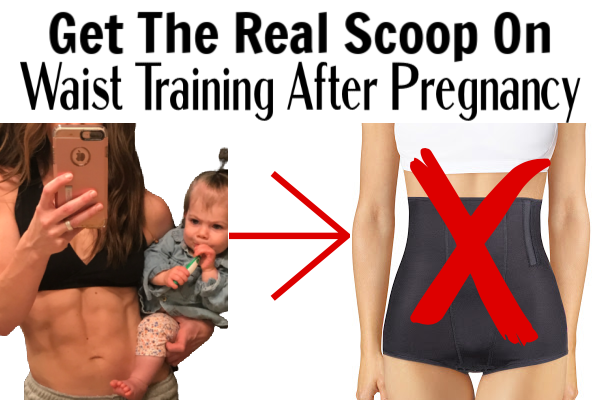
Final Thoughts on Reducing Your C-Section Stomach Overhang
Whether you have had a vaginal delivery or caesarean section birth, the recovery period can be daunting, frustrating and very defeating.
Personally, even though I didn’t have any visible scars after four vaginal deliveries, the damage to my pelvic floor was very difficult to heal and is something I will always struggle with.
I remember being humiliated for years when I couldn’t walk without urine leaking down my leg and could only wear certain pant for fear of the leakage being noticeable.
So it is important to remind yourself that every women’s body is unique and may require a different approach to postpartum recovery and wound healing.
Reducing a c-section shelf can be a challenging and frustrating journey but it is so important to give yourself grace and patience to heal your body and learn to appreciate it for creating the miracle of life, rather than just of its appearance.
As moms, we are all in this together and should uplift and remind each other of the strengths of our bodies.
With dedication, consistency and a healthy mindset, you are always capable of making progress toward better health, a stronger body and a positive mindset.
FACT CHECK
Struggles of a Fit Mom uses only high-quality sources, including peer-reviewed studies, to support the facts within it’s articles. Read my editorial process to learn more about how I fact-check and keep my content accurate, reliable, and trustworthy.
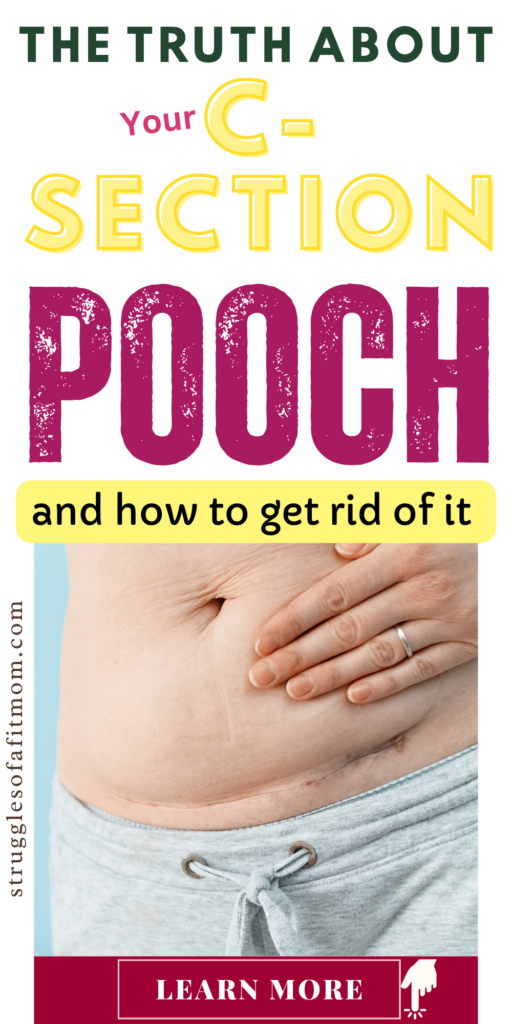
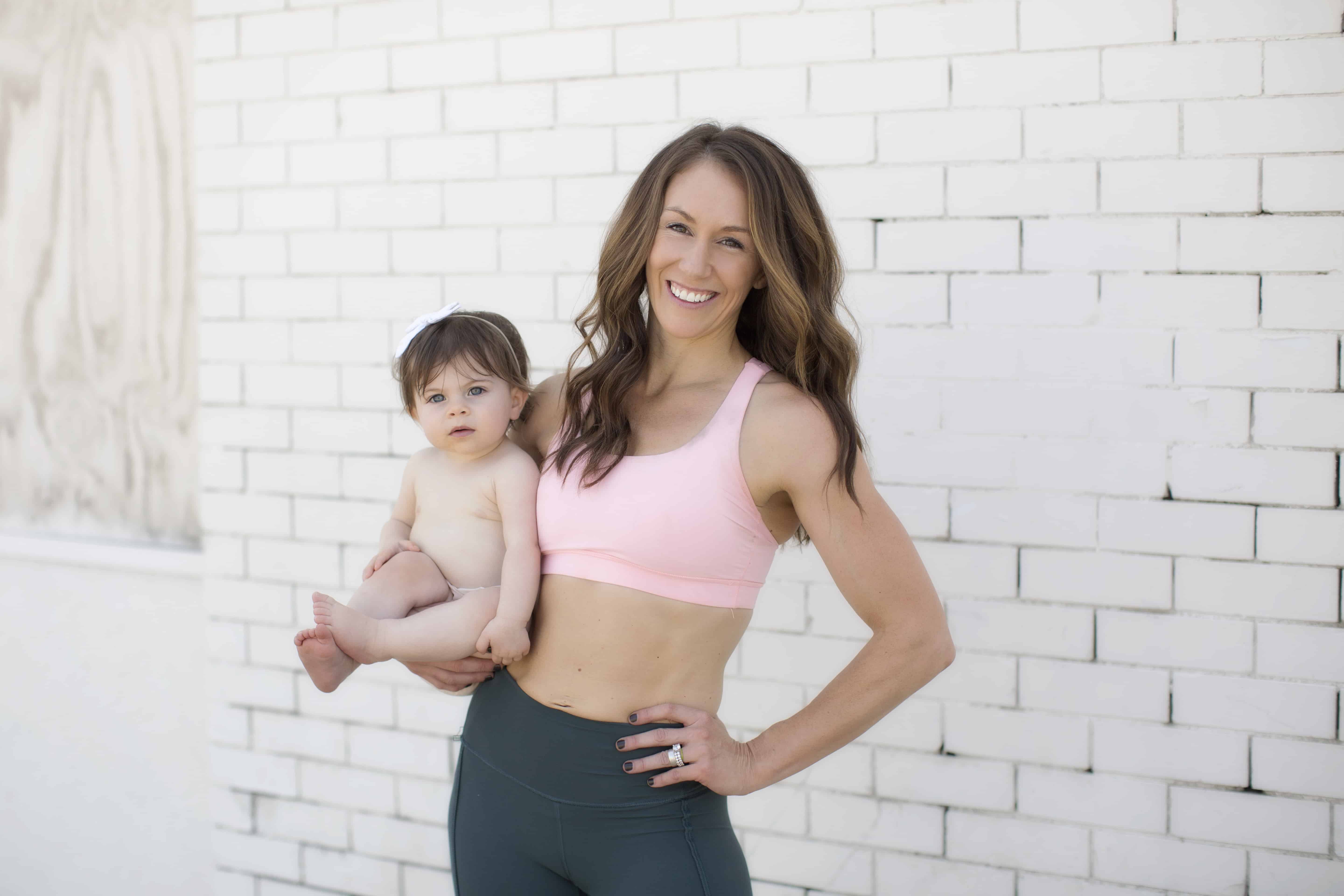
Brooke is a certified Prenatal and Postnatal Exercise Specialist with a Bachelors of Science degree in Kinesiology-Exercise Science. She is also a mom of 3 girls with more than 15 years of experience in health and fitness. Brooke’s goal at Struggles of a Fit Mom is to help motivate, educate and inspire other busy mamas who struggle with finding time, energy and motivation to take care of themselves in the chaos of motherhood.

